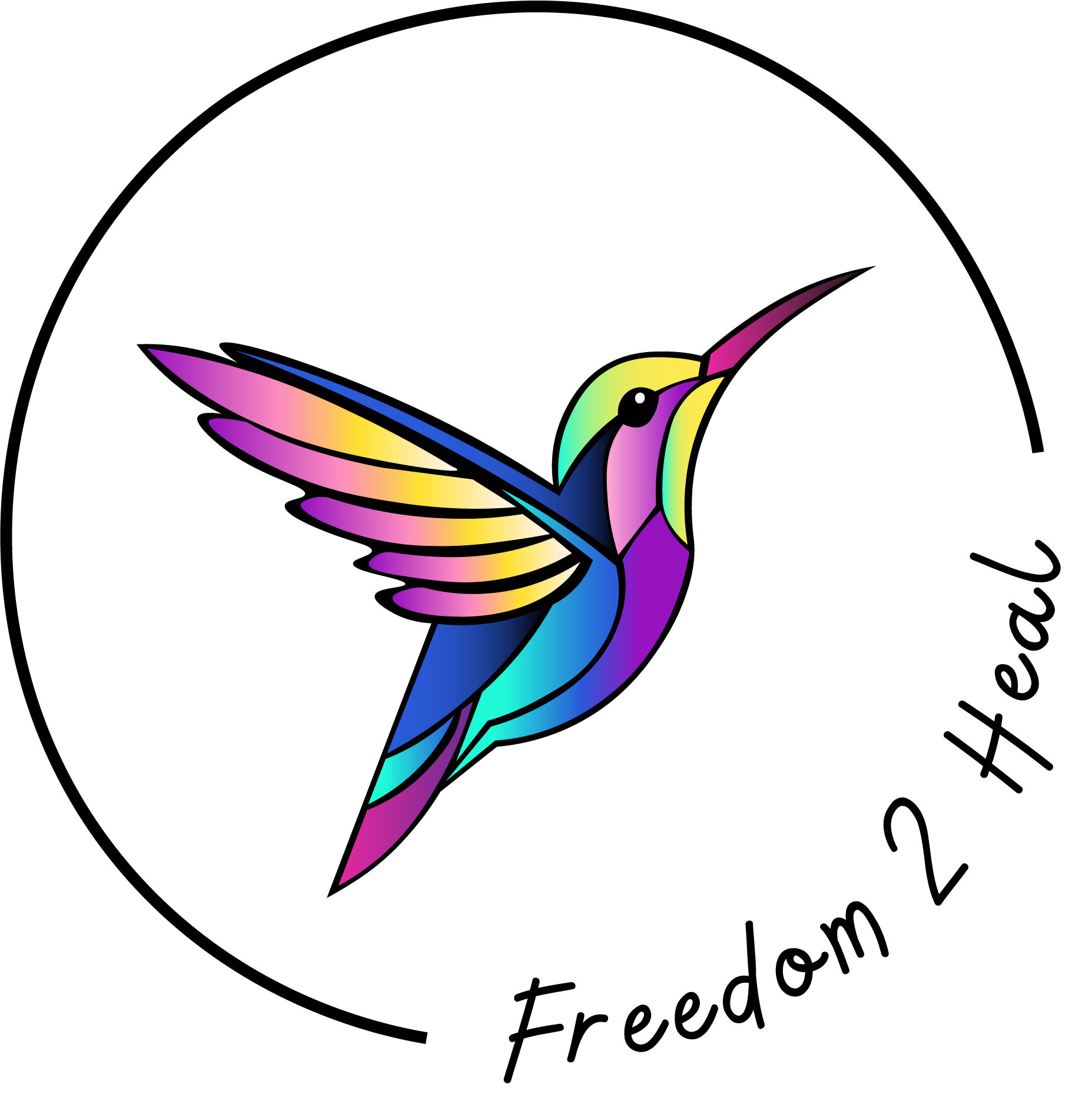By Amanda Hipkiss-Torrance
Mental Health Nurse, Master NLP Coach, EFT and MRA Practitioner (October 2024)

EFT is one of my go to techniques that I use with pretty much all of my therapy and coaching clients and share these skills with as many patients as possible in my role as a Mental Health Nurse.
I also use tapping myself on a daily basis.
In the next few paragraphs, I’m not only going to introduce you to EFT and give you some background, I am going to tell you exactly how you can use it as a self-help tool to assist with, well, pretty much anything! Ok, first things first…
What is Emotional Freedom Technique (EFT)?
EFT, also commonly known as tapping, is an alternative or complementary therapy that combines traditional Chinese medicine with various western therapies. More lately you may find it referred to as ‘energy psychology’ which for me describes the integration between mind and body that it offers perfectly.
‘The cause of ALL negative emotions is a disruption in the body’s energy system’.
– Gary Craig (Founder of EFT)
EFT is founded in the understanding that energy flows through the body in channels called meridians and if this energy does not flow freely, it can cause blockages. These blockages result in emotional or physical dis-ease and are caused by the traumas we experience and the beliefs we hold.
EFT works by stimulating acupressure points along the meridians while focusing on the negative emotion, memory or issue. Doing so changes our perception of the threat, clears these blockages and restores the body’s equilibrium.
Why do we focus on the negative?
Ok, so have you ever experienced a time when you have told someone you’re feeling down only for them to ignore your feelings, tell you to get over it or worse; cheer up? Did you feel better after? I’m guessing no!
However, if the same friend accepted you were feeling sad and gave you some time and space to talk about how you feel I bet you would have a different experience?

This is because we heal by feeling and thus processing the unconformable emotions. In fact, EFT works on the whole idea that ignoring or avoiding emotions is what causes the blockages and recognises that if we don’t address how we truly feel the emotions stay trapped and the physical or emotional pain will continue. So, basically, ignoring it won’t make it go away!
What can EFT Help with?
- Depression
- Anxiety
- Negative Thoughts
- Self Esteem
- Confidence
- Past Trauma
- Anger
- Fear
- PTSD
- Physical Issues
- Grief
This is not an exclusive list, the evidence for EFT is extensive. For example, Bach et al (2019) who studied the physiological markers found that heart rate, blood pressure, and cortisol significantly decreased while immune system function improved. Church et al (2022) recognised EFT as an effective treatment not just for anxiety and depression but for other psychological conditions including insomnia, phobias and stress.
Even more exciting is that based on a small selection of papers from all the research available, The National Institute for Health and Care Excellence, NICE (2018) found EFT to be the second most effective and cost effective therapy for PTSD and have thus called for further research into this transformational technique.
This is just a snippit of what’s out there on this fantastic therapy and if you’re interested in exploring the evidence further, you can find a collation of over 500 studies on the EFT Universe website.
My experience of EFT
Professionally, as I mentioned I use this technique all the time. Some of the problems I have covered with clients not mentioned above, include blocks around money and business, intimacy and relationship issues and shame.
Personally, during the training, I had one of my most powerful experiences to date with EFT. We were asked to think of a memory to work with later that day. An image of the first moment I saw my Mum when I arrived home to spend her last couple of days with her came to mind. The moment was a huge shock to me as I wasn’t expecting such a drastic change in her. During the morning before our practice session, I could barely hold back the tears as this memory overwhelmed me. During the exercise time, I worked on it with a colleague using the EFT movie technique. At the beginning the tears flowed as I worked through the energy of the emotions and beliefs I had attached to this memory. Less than 30 minutes later the emotional charge dissipated and I was left in awe of this powerful therapy.

I have since continued to use EFT regularly to manage any difficult emotions or just to connect with myself. A specific example I always like to share is how after 20 years of avoiding it, I overcame my fear of the Dartford bridge. And all it took was a couple of short (and I mean short; I literally pulled up down the road and did it in the car) tapping sessions around that fear and now it is like any other part of the motorway!
So, what I hope you are seeing is that EFT is truly versatile, you can use this technique anywhere and as the founder Gary Craig’s moto goes, you should ‘try it on everything’.
Ok, I think it’s about time I showed you how to use EFT as a self-help tool so you can see and feel how powerful it is for yourselves.
How to use EFT for Self-help
Identify the issue
Bring to mind something that is troubling you. Maybe an event, an emotion, or a physical feeling. This will be your focal point while you ’re tapping.
Be as precise as you can. Really get in touch with how you feel, where is it in your body, does it have a shape, colour? For example, ‘a red fear in my stomach’ or ‘ a sad feeling in your gut’ and ‘a heavy restriction in my chest’.
Rate the intensity
Rate the intensity of the issue/ feeling from 0-10 (10 highest).
It can take practice to get in touch with our bodies so don’t worry if this is doesn’t feel easy at first. Practice taking a breath, close your eyes and focus on the issue. Notice what happens in your body, be curious, you you don’t feel anything right away you can focus on the words.

Create a Set Up Statement that:
1. Acknowledges the issue (as above). For example:
‘Even though I have this anxiety…’
‘Even though I have this red fear in my stomach…’
‘Even though I’m feeling sad…’
2. Has some statement of you accepting yourself despite the issue. For example:
…’I love and accept myself anyway’.
…’I am enough.’
…’I know that I am safe in this moment’
Then add them together like this:
‘even though I have this heavy red fear in my stomach, I deeply and completely accept myself’ or
‘even though I am scared of what will happen next, I know that I am safe in this moment’
Start tapping
Begin by tapping the point on the ‘side of hand’ (check below for the tapping points) while simultaneously reciting your setup statement three times.
Then, while repeating the identified issue (remember to be as specific as possible) lightly tap each point around seven times, moving down the body in ascending order (you will find the tapping points below).
Rate the intensity again
If it is still above a 2 or so then repeat the process. You may need to change the words if the emotions change or sesnsations feel different.
Tip – if you find tapping uncomfortable, you can try lightly pressing or rubbing the area, experiment, see what works.

The Tapping points
Top of Head: Directly on the crown of your head.
Eyebrow: Where the eyebrows begin, closest to the bridge of the nose.
Side of Eye: On the bone directly along the outside of the eye.
Under Eye: On the bone directly under either eye.
Under Nose: The indent between your nose and upper lip.
Under Mouth: This is the area just below your bottom lip and above the chin, right in the crease.
Collarbone: Starting from where your collar bones meet in the centre, go down an inch and out an inch.
Under Arm: On your side, about four inches beneath the armpit. For bra wearers, it’s where the strap sits.

You will notice the picture has finger points here too. I do show you these if we work together but they aren’t needed for self-healing.
How do I know it’s worked?
As well as a reduction in those intense feelings, common experiences are feeling more relaxed, calmer or more centred. Sometimes it can happen very quickly and others it maay take a little longer as the body takes time to catch up, all of this is normal.
Now, please don’t worry if it feels a little clunky at first. Like any new practice it can take a little time to get in the flow. And don’t be afraid to make it your own, change the words, direction of tapping, and even as I said earlier; how you tap.
What’s next?
I truly hope you found this blog helpful and enjoy using EFT as a self-help tool. You can also download my how 2 guide which you may find helpful. I have also created a short video to assist you which you can find on my YouTube channel or click here. Sometimes deeper work is needed and for this can be helpful to work with a trained therapist.
If you’d like to find out more about how I can help you then you can book a free discovery session here or you can contact me here:
References
Bach, D., Groesbeck, G., Stapleton, P., Sims, R., Blickheuser, K. and Church, D. (2019). Clinical EFT (Emotional Freedom Techniques) Improves Multiple Physiological Markers of Health. Journal of Evidence-Based Integrative Medicine, [online] 24(24), p.2515690X18823691. doi:https://doi.org/10.1177/2515690X18823691.
Church, D., Stapleton, P., Vasudevan, A. and O’Keefe, T. (2022). Clinical EFT as an evidence-based practice for the treatment of psychological and physiological conditions: A systematic review. Frontiers in Psychology, 13(13). doi:https://doi.org/10.3389/fpsyg.2022.951451.
EFT Universe. (2024). Scientific Research on EFT Tapping – Tapping Research – EFT Studies. [online] Available at: https://eftuniverse.com/research-studies/#standards [Accessed 10 Oct. 2024].Nice.org.uk. (2018). Recommendations for research | Post-traumatic stress disorder | Guidance | NICE. [online] Available at: https://www.nice.org.uk/guidance/ng116/chapter/Recommendations-for-research.
Nice.org.uk. (2018). Recommendations for research | Post-traumatic stress disorder | Guidance | NICE. [online] Available at: https://www.nice.org.uk/guidance/ng116/chapter/Recommendations-for-research.


